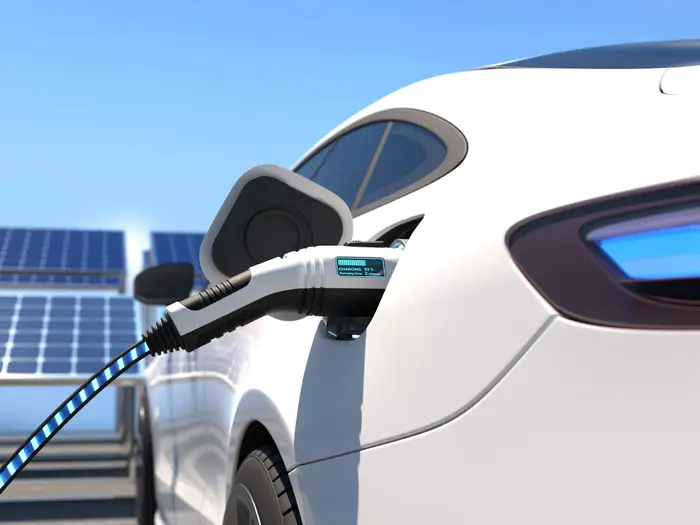In recent years, the popularity of Electric Vehicles (EVs) has peaked in many countries, and manufacturers are focusing on electric cars as the future of transportation. However, many still believe that electric cars have some challenges that make them unsuitable for mass adoption and that they will not be “the future of transportation,” as many speculate.
So, in this article, we will explore why some people believe electric cars will never work and the future of electric cars.
Problems with Electric Cars
The early days of Electric cars were marred by low speed, poor performance, and high price tags. While modern electric cars have resolved some of these problems, they have also developed new problems that affect their mass adoption. Despite the growing popularity of electric cars and the increasing number of charging stations, there are still several obstacles that need to be overcome before EVs can become a viable alternative to gasoline-powered cars.
1. Range Anxiety
Range anxiety is a common problem associated with electric cars, and it refers to the fear or concern that an electric vehicle’s battery will run out of charge before reaching its destination or a charging point. This fear can be a significant barrier for many potential electric car buyers, as it can limit their ability to travel long distances and can cause anxiety about the reliability and convenience of electric vehicles.
While the range of electric vehicles has improved significantly in recent years, with many models now capable of traveling over 200 miles on a single charge, range anxiety remains a concern for some drivers. Factors that can impact the range of an electric vehicle include driving style, weather conditions, and terrain, among others. Additionally, the availability and accessibility of charging infrastructure can also affect a driver’s confidence in using an electric vehicle for long journeys.

2. Long Charge Times
Another problem with electric cars is the amount of time it takes to charge them. While gasoline-powered cars can be refueled in a matter of minutes, charging an EV can take several hours, depending on the charging station and the car’s battery capacity. This might be troublesome for drivers who are pressed for time or driving long distances. Even with fast-charging stations, it can take up to an hour to charge an EV enough to drive another 100 miles.
Long charge times can also be a challenge for those who do not have access to a home charging station, as they must rely on public charging stations. These stations may not always be available or may have long wait times, which can be frustrating for EV owners. Additionally, some older buildings or apartments may not have the necessary electrical infrastructure to support EV charging, making it difficult for residents to switch to electric cars.

3. Limited availability of charging stations
For owners of electric vehicles, a shortage of charging stations is a major concern. Despite a huge rise in the past few years, there aren’t yet enough charging stations to accommodate the rising demand for electric vehicles. In rural or distant places, where there are fewer charging stations accessible, this might be a particularly problematic situation.
Furthermore, there may be problems with the compatibility and dependability of charging stations even in locations where they are accessible. Different electric vehicle models require various kinds of charging stations, and certain stations might not work with all models. Additionally, some charging stations could not be operating properly, leaving owners of electric cars stranded and unable to charge their vehicles.
Another issue is the absence of a uniform pricing infrastructure. There is no one standard for charging electric vehicles, despite the fact that there are many distinct charging interfaces and standards. This can create confusion for electric car owners and make it difficult to know which charging stations to use. The installation and upkeep of charging infrastructure might become more complicated and expensive for charging station operators in the absence of a standard.

4. Upfront Vehicle Costs
The high initial cost of EVs is one of the key obstacles to their widespread adoption. The fact that electric automobiles are often more expensive than gasoline-powered vehicles can be a big turnoff for many individuals. The high upfront cost of EVs can be an issue for many individuals who might not be able to buy one or who may not think the long-term savings are worth the initial investment, even if they may be less expensive to operate over the course of their lifetime.
The battery, which is currently the most costly part of an electric car, is mostly to blame for the higher price. Despite recent declines in costs, batteries still account for a sizeable amount of the overall cost of the car. The fact that electric vehicles frequently have more cutting-edge features and technology can further raise their price.
5. Battery degradation
All battery types, including those used in electric vehicles, are subject to battery degradation, which is a natural process. The battery’s capacity to hold a charge degrades over time, which results in a reduction in the amount of time the vehicle can be run on a single charge compared to when it was new. Owners of electric vehicles may find this to be a problem since it may be necessary to replace the battery after many years of use, which can be costly.
Age, temperature, charging and discharging cycles, and other variables can all contribute to battery degeneration over time. The battery can deteriorate more rapidly under high temperatures, such as those seen in warmer climates. Similarly, a battery can degrade over time through repeated charging and draining cycles.
The extent of discharge is another aspect that may be responsible for battery deterioration. This is the percentage of a battery’s capacity that is utilized throughout a charge cycle. An electric car’s battery can suffer greater damage if it is regularly charged to 100% and then driven until it is nearly totally discharged than if it is charged to 80% and then recharged.

6. Environmental Concerns
Even though gasoline-powered automobiles are frequently seen as the more environmentally friendly alternative, the development, and use of electric cars nevertheless raise some questions.
The manufacture and disposal of their batteries are one the primary issues. Batteries are made using hazardous substances like cobalt and lithium, which, if not handled carefully, might have a harmful influence on the environment. In addition, improper recycling or disposal of spent batteries can cause environmental damage.
The source of power utilized to charge electric vehicles is a further problem. Even if renewable energy sources like solar or wind power may be used to produce electricity, coal, oil, and natural gas remains to account for the majority of the world’s energy needs. As a result, even if their carbon footprint is lower than that of gasoline-powered vehicles, electric vehicles might still have one.
The rising demand for electric vehicles may also result in more mining operations to obtain the minerals needed for their manufacture, which might have detrimental effects on the environment, such as habitat loss and pollution.
The History of EV
Electric cars are not new; they have been around since the 19th century. Robert Anderson, a Scottish inventor, invented the first electric car in 1837. In the late 19th and early 20th centuries, electric vehicles were prevalent until the internal combustion engine was developed and gasoline-powered cars became more feasible.
As issues regarding air pollution and emissions of greenhouse gases increased in the late 20th century, electric cars saw a rebirth. The EV1, the first mass-produced electric car, was unveiled by General Motors in 1996. Yet, the automobile was abandoned in 2003 as a result of weak sales and limits in battery technology.
The invention of rechargeable lithium-ion batteries was a breakthrough for electric cars, as it made it possible to build electric cars with longer ranges and faster charging times. The Toyota Prius and Nissan Leaf, which served as the first mass-produced hybrid and all-electric vehicles, respectively, were also significant milestones in the evolution of electric vehicles. These cars aided in showcasing the possibilities of electric vehicles and increasing public awareness of their advantages.
The Model S, which Tesla introduced in 2012 and which went on to win multiple prizes and establish new benchmarks for electric vehicles, represented yet another major turning point for electric vehicles. Since then, Tesla has grown to be among the most valuable automakers in the world, and other automobile manufacturers have begun to produce electric vehicles.
The Future of EV
Electric vehicles are often regarded as the future of transportation. In recent years, electric vehicles have become more and more popular, with many experts and enthusiasts hailing them as the form of mobility of the future. This is due, in particular, to the fact that electric cars have no emissions, making them a green alternative for lowering carbon emissions and halting climate change. As a result, governments all over the world are encouraging the use of electric vehicles to encourage environmentally friendly transportation options.
The investment that automakers are making in electric vehicle technologies is another element promoting the adoption of electric vehicles. Companies like Tesla, Nissan, and BMW are investing a lot of money in R&D to increase the effectiveness and performance of electric vehicles. As a result of this investment, electric vehicles are becoming more affordable and available to the general public. However, electric cars still have some challenges that need to be overcome for them to become the norm.
● Charging Infrastructure Expansion
For electric cars to become the norm, one of the major issues that must be solved is the expansion of the charging infrastructure. The range of electric cars is limited, and they are less convenient for drivers because there aren’t enough charging stations, particularly in outlying or rural locations. Governments and private businesses should spend more money constructing charging stations and making sure that they are dependable, conveniently situated, and simple to use.
To lessen the carbon footprint of electric cars, it is also necessary to incorporate renewable energy sources into the charging infrastructure. To guarantee that the charging stations are connected to renewable energy sources like wind or solar power, this integration necessitates cooperation between power utilities and charging station suppliers.
● Consumer Acceptance and Affordability
The price of electric automobiles and consumer acceptance are also critical factors in their broad adoption. Despite the fact that electric vehicles are growing in popularity, some buyers are still hesitant to replace their gas-powered counterparts due to concerns regarding range anxiety, charging times, and the accessibility of charging stations. Even with government subsidies, some customers may still consider the initial cost of electric automobiles to be too high.
More outreach and awareness initiatives may be required to raise customer acceptability by emphasizing the advantages of electric automobiles, such as their lower running costs and environmental advantages. To further increase their appeal to consumers, automakers may need to improve the functioning and design of electric vehicles.
In terms of affordability, the cost of electric cars is expected to decrease as battery technology improves and economies of scale are achieved in production. To make electric cars more affordable for buyers of all income levels, however, it may be essential for the government to implement incentives and legislation. For instance, some nations have introduced tax breaks or refunds for buying electric cars, while others have passed laws to promote the construction of charging stations in public spaces.
● Environmental Benefits
Electric cars have significant environmental benefits compared to traditional gasoline-powered vehicles. EVs have tremendous environmental advantages that cannot be emphasized. Due to the absence of emissions during operation, electric vehicles contribute to a reduction in air pollution and greenhouse gas emissions, improving the well-being of the environment and the quality of the air we breathe. This is crucial in cities where air pollution can lead to respiratory issues and other health concerns.
Additionally, the adoption of electric cars is critical to achieving global climate change goals. Governments all around the globe are promoting the transition to electric cars by offering different incentives, including tax credits, rebates, and free parking. Owners of electric vehicles may be free from various taxes or permitted to use HOV lanes in some countries. These rewards are meant to encourage the use of electric vehicles by customers while also lowering the number of emissions generated by transportation.
Notwithstanding the fact that electric vehicles have many positive environmental effects, both their manufacture and disposal still have an effect on the environment. The usage of energy, water, and raw materials during battery manufacture can have a detrimental impact on the environment. In addition, batteries for electric vehicles include hazardous substances like lead and lithium that need to be properly disposed of and recycled in order to prevent contamination and pollution. For electric vehicles to have as little of an environmental impact as possible, efforts must be made to continually enhance battery recycling and disposal techniques.
● Battery technology improvements
Electric car success depends on battery technology. The primary issue now facing electric cars is their short range on a single charge. While the driving range of electric vehicles has increased recently, it still isn’t as extensive as that of gasoline-powered cars. Long-distance driving is also less convenient because charging durations can sometimes be much longer than refueling times for gasoline-powered automobiles.
To extend the driving range of electric vehicles and shorten charging periods, battery technological advancements are required. More energy-dense, lighter, and more affordable batteries are being developed by researchers. Although lithium-ion batteries are now the most popular kind of battery used in electric vehicles, solid-state batteries, and flow batteries are being researched and may eventually offer considerable performance enhancements.
In comparison to lithium-ion batteries, solid-state battery packs have the potential to provide greater energy density, quicker charging times, and increased safety. They do not use the liquid electrolyte found in lithium-ion batteries, therefore there is no chance of leakage or explosion. Rather, they employ a solid electrolyte.
The liquid electrolyte used in flow batteries, on the other hand, is kept in external tanks and is pumped through the battery. As a result, battery sizing is more flexible, making it simpler to make adjustments for larger vehicles.
In general, advancements in battery technology are essential for the mainstream adoption of electric vehicles. The range and charge durations of electric cars will become more equivalent to those of gasoline-powered automobiles as battery technology advances, making them a more feasible option for many people.
Therefore, electric cars have the potential to revolutionize the transportation industry and have a positive impact on the environment. However, there are still challenges that need to be overcome, including charging infrastructure, battery technology, consumer acceptance and affordability, and environmental concerns. As these challenges are addressed, electric cars will become a more practical and viable option for transportation, and their adoption will continue to increase.
Conclusion
In conclusion, while electric cars have made significant progress in recent years, they still face several challenges that make them unsuitable for mass adoption. Range anxiety, lengthy charging periods, a dearth of charging stations, up-front car expenditures, battery deterioration, and environmental issues are a few of these difficulties.
Even though electric vehicles have gained a lot in appeal lately numerous challenges continue to be resolved before they can be a practical substitute for gasoline-powered vehicles. Nevertheless, ongoing technological development and infrastructural upgrades may help to overcome some of these issues and make electric cars more practical and accessible for widespread use in the future.
celebritydig.com






